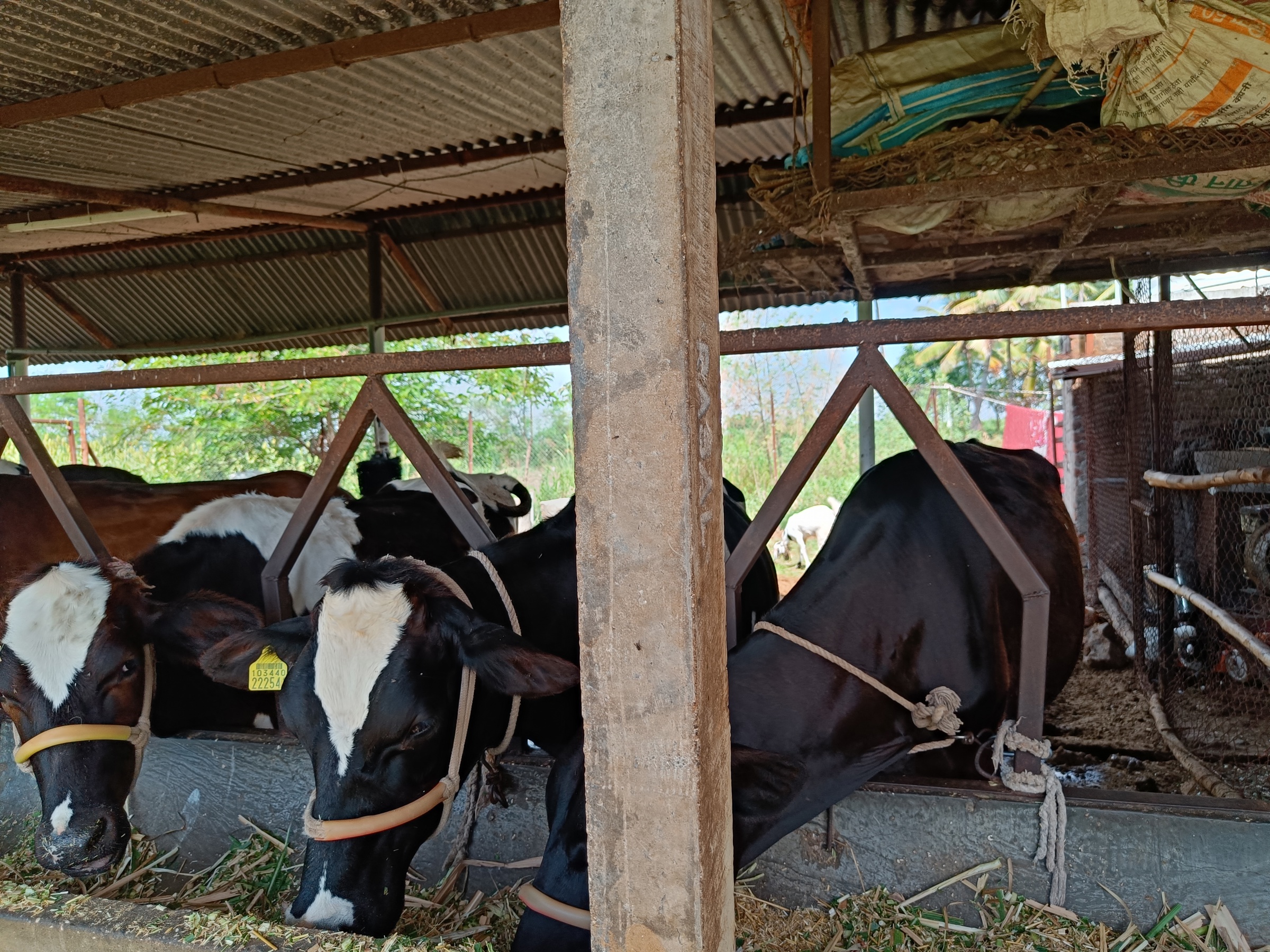Sustainable dairy farm practices
- Use mainly renewable resources that have a minimal dairy carbon footprint
- Create happy and healthy dairy cows that use minimal amounts of antimicrobials
- Ensure profitability because healthy dairy cows produce healthy and nutritious animal proteins, both now and in the future.
Sustainable dairy farming has many different elements that are all interrelated. An integrated programme with sustainable dairy farm practices is therefore required.
The carbon footprint of healthy dairy cows
The carbon footprint of a dairy farm is mainly related to the production of greenhouse gasses. Greenhouse emissions can come directly from the cow or can be related to the farm operations. A clear example of the latter is the CO2 which is produced because the farm uses fossil fuels to produce energy. Another less well-known example is the use of fertilizer. About 2% of the global fossil energy sources are being used for the production of fertilizer every year, resulting in a significant dairy carbon footprint.
How to make dairy farming more sustainable?
Healthy dairy cows on a farm produce 3 different greenhouse gasses that potentially increase the dairy carbon footprint: carbon dioxide (CO2), nitrous oxide (N2O) and methane (CH4):
- Dairy cows produce a lot of carbon dioxide, but this is a circular process: plants use CO2 and water to produce sugars and oxygen, and the cow uses these plants and oxygen to produce energy and CO2 (see Figure 1). Most of the CO2 emission of a dairy farm comes from the farming operations.
- Nitrous oxide is mainly released when manure is injected into the soil.
- When the feed the cow eats is fermented in the rumen, there is enteric production of methane (CH4). Most of this enteric CH4 is expelled through belching. A small percentage of enteric CH4 is produced in the cow’s large intestine and then expelled. Next to enteric production of CH4, there is also production of CH4 via manure after this manure has been produced by the cow. Methane has a big impact on the dairy carbon footprint because the greenhouse gas effect is 34 times bigger than the greenhouse gas effect of CO2.
Several strategies to reduce greenhouse gas emissions of dairy farms exist. Most of these sustainable dairy farm practices are based on increasing the efficiency of production, resulting in an increase of lifetime production, an increase of income over feed costs of the dairy farm and a reduction of the dairy carbon footprint. It is also possible to influence the rumen fermentation of healthy dairy cows with feed additives in such a way that carbon emission shifts away from methane. Selko IntelliBond is an example of a feed additive that reduces the carbon footprint of a daiy farm because it improves feed efficiency. Fytera Balance is an exmaple of a feed additive that has a direct effect on the carbon footprint because it reduces CH4 production as result of rumen fermentation, next to improving feed efficiency.
Storage and injection of cattle manure into the soil can increase the dairy carbon footprint because it results in the production of methane (CH4), ammonia (NH4), nitrous oxide (N2O) and sulphur dioxide (SH2). Next to that, injection of cattle manure into the soil creates environmental issues because of the odour and the deposition of phosphorus. There are sustainable dairy farming methods to reduce methane emission from manure.
Avoiding polution of soil with trace minerals excreted with dairy cow manure
Supplementation with trace minerals is required to keep dairy cows healthy and productive. There are large differences between sources of trace minerals when it comes to bioavailability. Most of the trace element source that does not become available to the animal will end up in the dairy manure. Metal ions like copper and zinc have a strong antimicrobial effect. As a result, pollution of the environment with metal ions via manure can have a negative impact on soil, resulting in a reduction of biodiversity. Hydroxy trace minerals such as IntelliBond are highly bioavailable in dairy cows and as a result, the impact on the environment is being reduced, improving the sustainability of dairy farming. Next to that, if IntelliBondis exposed to environmental conditions, the risk of leaching is low, resulting in a further reduction of the environmental footprint of dairy farming
